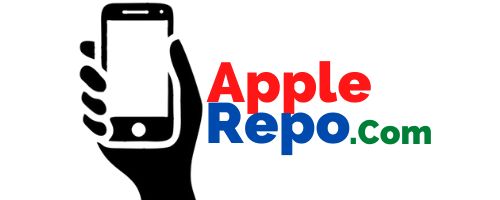In this post, we’ll look quickly at planning how the iPad and iPhone will connect to your Virtual Private Network (VPN). We’ll start by reviewing the VPN technologies the iPad and iPhone support, talk about settings you may need to change to make your VPN friendly to the iPad and iPhone, and finish by considering which users you should grant remote access to the network.
Read: best Free VPN for iPhone
Making Sure Your VPN Uses Suitable Technologies and Settings for the iPad and iPhone
The first step in planning the connection is to make sure your VPN uses one (or more) of the five widely used types of VPN that the iPad and iPhone support:
1. Cisco IPSec. Cisco IP Security is widely used for establishing secure VPN connections. With IPSec, you can use several different methods of authentication including x.509 digital certificates, RSA SecurID, and CRYPTOCard.
2. L2TP Over IPSec. Layer 2 Tunneling Protocol over IPSec gives good security and is widely used. With L2TP, you can use either a password or a shared secret for authentication.
3. PPTP. Point-to-Point Tunneling Protocol is the weakest of the widely used VPN technologies. Use PPTP only if you can’t use any other VPN type. PPTP uses a password to secure connections.
4. Cisco AnyConnect. Cisco AnyConnect VPN technology uses the Datagram Transport Layer Security (DTLS) protocol to provide security and performance over VPN connections. With AnyConnect, you can use either a password or a certificate for authentication.
5. Juniper SSL. Juniper Networks’ VPN appliances use Juniper SSL to secure the VPN connections. With Juniper SSL, you can use either a password or a certificate to secure the connection.
NOTE: When you use a certificate to authenticate a Cisco IPSec, Cisco AnyConnect, or Juniper SSL VPN, you can enable VPN on demand, which can be a big timesaver. VPN on demand makes the iPad or iPHone automatically establish a VPN connection when the user tries to access any of the domains or host names you add to the connection’s list.
If your VPN uses one of those five types, you’re halfway there. (Otherwise, you’ll need to add one of those five types to your VPN setup.) You should also take these three steps:
1. Check your VPN concentrators. Make sure they use VPN standards the iPad and iPhone support.
2. Check the authentication path. Make certain your RADIUS server or VPN authentication server is using iPad-and iPhone-friendly standards.
3. Use suitable certificates. If you’re using certificates for authentication, the iPad and iPhone can use PKCS1 format (files in the .cer, .crt, and .der file formats) and PKCS12 format (files in the .p12 and .pfx file formats).
TIP: To avoid problems, make sure your remote access routers and concentrators are runni9ng the latest firmware versions. Update them if they’re not.
Please get back soon as I am going to post some important instructions on how to set up your iPad or iPhone to connect to your VPN.
Check Out These Too:
- Report: No 7 Inch iPad Next Year Given the wild success of various Android tablets that are smaller than the iPad many analysts began to consider the fact that Apple may release a 7 inch iPad. There…
- How to fix No SIM Card installed error On Your iPad? How to fix No SIM Card installed error On Your iPad? - Apple Repo, Nothing in this world can make people happy when they have new gadgets on hand. Everything…
- The iPad Project in the United Kingdom A multi cultural society It seems that everyone in the world is living in Britain. Although the indigenous people might mourn about it, the reality is that this is not…
- How to Fix Wifi on iPhone or iPod Touch IPod Touch and iPhone have basically the same interface and appearance. Aside from the fact that these devices were created by Apple Inc., the two shares the same operating system.…
- Apple Planning to buy Memory Chip Company Apple is apparently in the process of acquiring another new company which will likely help boost the company in a variety of different ways. Apple has always been working hard…
- 6 Great Apps that Will Only Work on Jailbroken… The iPad and iPhone 4 are the current kings of the market when it comes to mobile devices, and each of them has carved a specific niche, which other manufacturer…
- iPad Likely to Get 4G LTE Before iPhone Apple has always been a little bit behind when it comes to network technologies so we aren’t exactly expecting to see a 4G iPhone in the near future but it…
- How to Sync iPad with PC-based iTunes Syncing or synchronizing iPad to the iTunes in your computer will help in retaining a backup of copy of all the important files like apps, videos, music and all types…
- How to Set Up Remote Desktop for iPad Do you know how to set up remote desktop? Lite Remote Desktop (RDP) is a program designed for software developers who use MochaSoft the Apple iPhone, iPod Touch…
- How to use iPad Gestures Gestures are simple inputs that can control nearly any feature or function of your iPad and with a little bit of training they can become an incredibly useful tool. Unfortunately…
- How To Sync Your iOS 8 Device To iTunes Via Wi-Fi Okay! So the newest iOS 8 is finally out, and every one is itching to try out the feature that it's boasting of - the wireless syncing ios 8 iphone,…
- Tips to know for iPad Even if at the iPad launch some people rushed to criticize Apple's new device, the PC tablet of American company managed in a very short time to revolutionize the global…
- iPad is Disabled Connect to iTunes: A Comprehensive Guide Welcome to our comprehensive guide on resolving the "iPad is disabled connect to iTunes" issue. This message can be quite alarming, especially if you rely on your iPad for daily…
- Air Playit App Review - Free Video And Audio… Air Playit iPhone Apps Review Digiarty Software released a free video & audio streaming app for iphone and ipod touch, Air Playit on July 15. It breaks through the limitation…
- The 4 Most Common iPad Problems and How to Solve Them The 4 Most Common iPad Problems and How to Solve Them - Apple Repo, Like any other electronic device, the iPad can present problems when executing some of its functions.…
- How to Connect iPad to TV? 3 Best Tips to Answer… One of the best way to watch videos and movies is with the use of iPad. It can be one of your boredom killers especially if you are spending a…
- How to Pair Airpods to iPhone How to Pair Airpods to iPhone - AirPods are a new type of wireless earbuds that let you take phone calls, control music playback, and handle other tasks without having…
- How to Fix Floating Keyboard on Ipad How to Fix Floating Keyboard on Ipad - AppleRepo, Ever since the ipad 2, some users have had problems with the keyboard. It would come on, then disappear. If you…
- Forgot Apple Watch Passcode? Forgot Apple Watch Passcode? Here is How to Reset it - Apple Watch needs a passcode to protect your privacy. The passcode is a six-digit number that you create when…
- How to Resolve Low Memory Issues on your iPad How to Resolve Low Memory Issues on your iPad - AppleRepo.com, If you are an owner of Apple iPad then surely you would be aware regarding the issues related to…
- Solving iPad’s Wifi Problem Do you have iPad WiFi Problem? When a new technology device is released, there are problems for users and developers had forgotten to create the device operating system. This…
- How to Improve Your iPad's Wi-Fi Performance One of the most common problems found with the iPad, just a few short months after its release, is that users are surfing happily along online, when their Wi-Fi connection…
- Jaadu VNC App - Remote Desktop for Windows reviews Jaadu VNC App is developed by iTeleport, Jaadu is a virtual network client (VNC) application for the Mac, ipad, iphone and iPod Touch that allows you to view and control…
- Apple Planning to Drop 30 Pin Connector The iPhone 5 is still one of the mysterious upcoming iOS devices but as the release gets closer and closer we're beginning to learn more and more about what the…
- Google Aims to Compete with Apple iPad The Apple iPad is one of the most revolutionary inventions that has been created in the recent years and ever since Apple actually announced the release of the device, many…
- Top 10 Productivity Apps for the iPad It's great to be able to read e-books on the iPad and watch videos but, what about when you really need to get something done? Whether it's notes for a…
- Having An Ipad And Iphone Stuck On Waiting While… It really annoying when you try to download iOS apps for your iphone or ipad and you got a jam that delays the installation process. Having a bad day just…
- iOS 14.5.1 and iPadOS 14.5.1 Latest Update Apple has released two new updates for your iPhone and iPad. These are minor changes with bug fixes and security fixes. What's new in iOS 14.5.1 / iPadOS 14.5.1? Apple…
- What to Do After Asking Why Does My iPad Keep Freezing? What to Do After Asking Why Does My iPad Keep Freezing - AppleRepo.com, When you iPad freezes, it can be a hassle. If it freezes again—ditto. There are several causes…
- How to Unsync an iPhone How to Unsync an iPhone from Another iPhone, Ipad and a Mac Computer - Apple Repo, When you sync your iphone to another device, the phone will continue to save…

